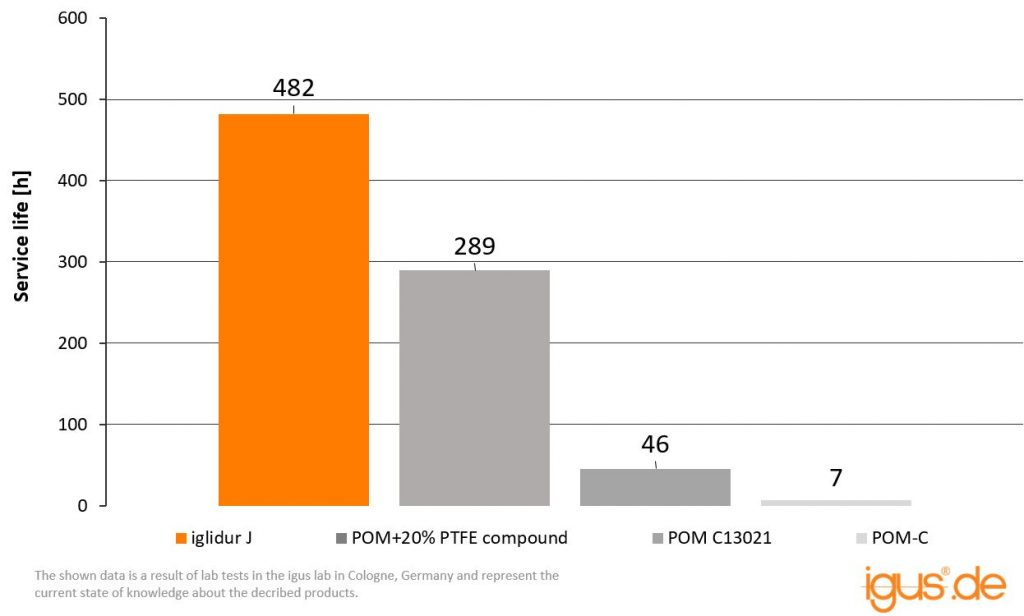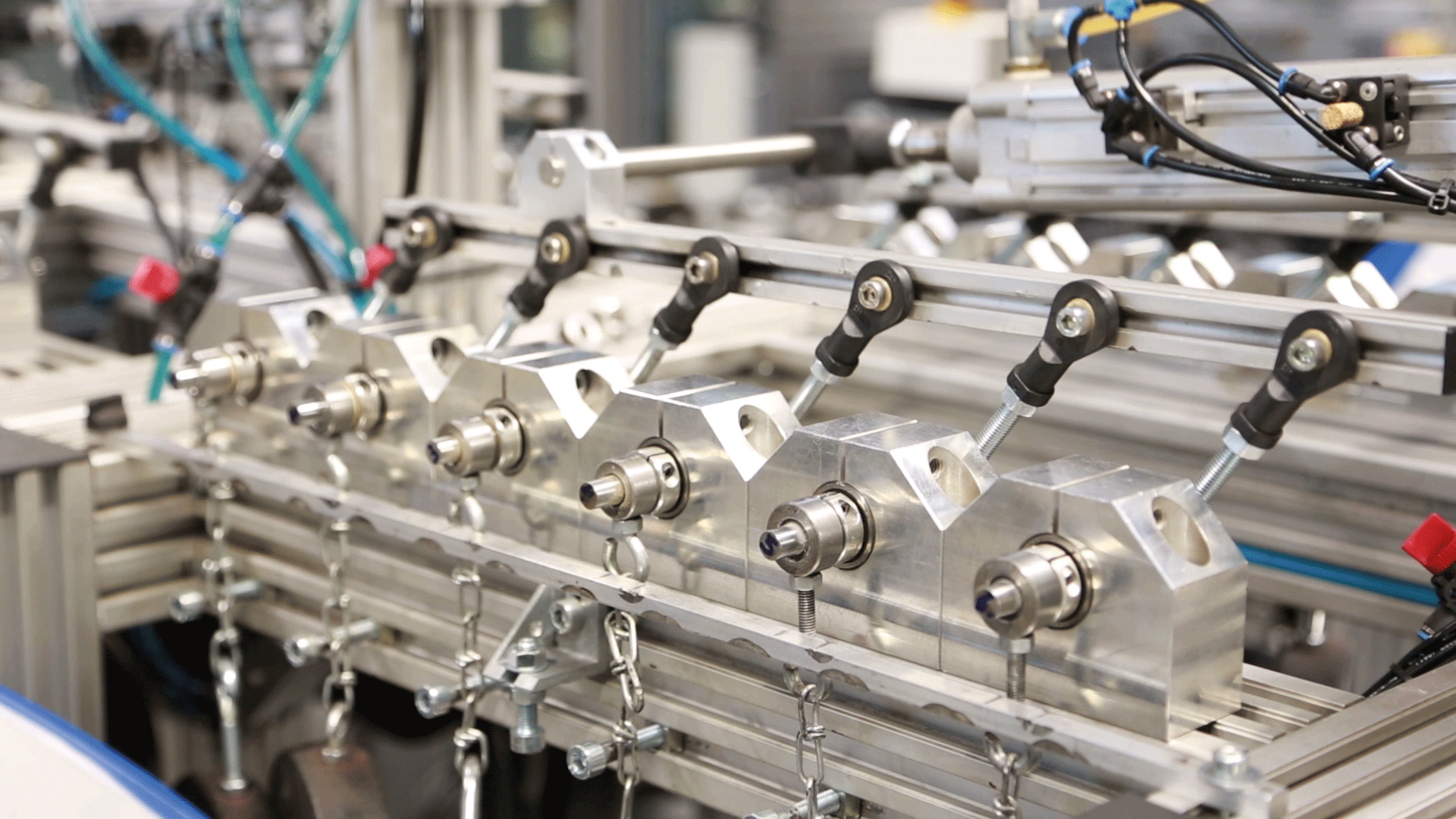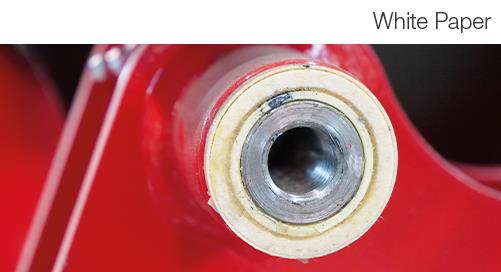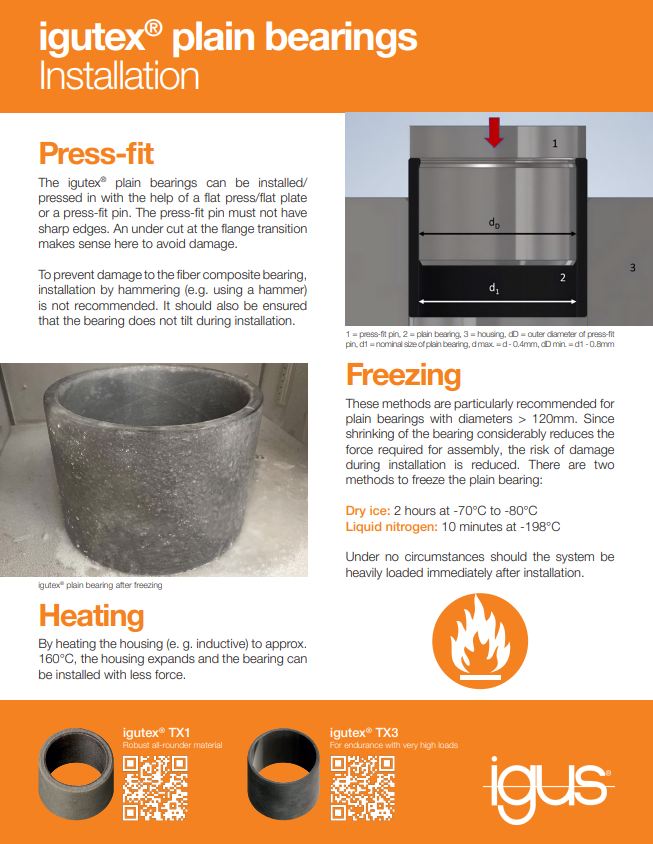What Is iglide®? And, What Does It Do Better Than POM?
Recently, I decided to put together a blog post that promised to finally put an end to the mystery that seems to surround iglide®. What is iglide®? And, why are customers willing to spend a bit more upfront on bearings that are made from this material?
To make one thing clear right away—I have no intention to bore you with a long, for defense speech to save the honor of iglide®. Actually, I think that any question regarding the ingredients and the “magic” behind elaborately-labeled products is completely understandable. Although product quality and sustainability are becoming more and more important aspects in today´s world, saving on costs is still a very important matter for many companies. Therefore, it is very common to ask yourself, “what exactly am I paying for here?"
Even with value and price set aside, most products require thorough documentation on performance, properties, and compliance with norms and regulations. So, it's certainly important to know what the actual ingredients are and what properties they have.
Ok, lets continue following this train of thought and dive into the blog post concept that I mentioned above. Let´s see what we discover behind the curtains of both iglide® in particular, and plastic bearings in general.
iglide® vs. POM—or versus what actually?

Trying to compare the different capabilities of plastics as a bearing material is not easy. There are countless options when it comes to plastic bearing materials, and many come with fancy names or claim to be enhanced versions of “regular” plastics.So, to give you an idea of why comparisons are a bit more difficult, let's take a look at what´s inside of these plastic materials. Most engineering plastics are some sort of mixtures. They are called blends or compounds and are all based on the same limited range of so called "base-polymers". Typical base polymers in bearings are Polyamides (PA, PA6, PA46, PA66) , Polyoxymethylenes (POM) or—if it comes down to temperature resistance or other special properties—PEEK, PSU, PPSU, PPS (sparing everyone from the long versions), and a few others. But, how do we compare these?
There are a plethora of helpful, and sometimes unhelpful, tools for this, which range from countless variations of the infamous “plastic pyramid” infographic to data sheets and white papers on the web that are aimed at trying to help you find the right material. And of course there is a ton of books on the subject in general. But how do you know, which to use for bearings?
Data sheets help, but still don´t provide enough answers
Comparing data sheets is the standard procedure, but when it comes to bearings, data sheets often lack the practical parameters that directly relate to the materials suitability for bearing designs. For example, wear resistance is affected by many other different aspects, and the coefficient of friction, which is an commonly used data point from data sheets, actually depends on a whole other set of environmental parameters. On top of this, most plastic polymers do not vastly vary from each other in regard to data sheet parameters. In fact, you will notice barely any difference when looking at key properties such as density, thermal expansion, or even mechanical resistances for compounds which share the same base material. These properties can be altered to a certain extent using fillers and additives and range from reinforcing fibers/ flame retardant, to UV-radiation protection agents.
Although each ingredient has only a relatively small impact on the standard data sheet values, they still greatly influence the wear and sliding behavior for bearing assemblies. Even extremely small adjustments to the material mix can have dramatic consequences upon the service life of a bearing. Witin our own material-development projects, even small percentages of pigments that we use for changing the color of materials impacted failure rate and optimal performance in field tests.
POM is POM, right? Wrong!
One of the many wear analyses we did within our research lab helps visualize this “phenomenon”. We test all of our bearing materials, along with various competitor materials, on our own standardized test rigs. By using this setup, we are able to determine the loss of wall thickness within realistic environmental conditions while adjusting parameters like load, speed, type of load and type of motion. Here´s a recent visual of one of these tests, comparing the service life achieved amongst various bearing materials.

All bearings were tested in the same environment:
- A V2A stainless steel shaft.
- A load of 1 MPa.
- 0.3 m/s rotational speed.
- Room temperature 23°C.
By the end of service life, we discovered a loss in wall thickness of 0.25 mm. While the two POM variants without any fillers and additives broke down early with 7 and 46 hours of continuous movement respectively, the POM compound with 20% PTFE lasted for 289 hours. This compound was only surpassed by iglide® J, which had a service life of 482 hours.
But, how do we know which material is better?
Since 1964, igus® has been developing solutions for problems caused by wear, and pretty much since day one, our customers have been asking the same question. “So, how long does the material actually last?”
To answer this fundamental question, which would fill pages and pages of engineering textbooks (unfortunately, focused only on lubricated metal bearings), we decided to take a more practical approach. We developed a little tool called “iglide® Service Life Calculator”, which we feed with actual test data from practical wear tests.
For ages, wear analyses were done using so called pin on disk tests. However, we chose to go a different, more practical route, in the hopes of finding a method that emulates the actual conditions that a plastic bearing assembly would be used in. So, we built test rigs that could run actual plain bearings made out of our materials against any type of load, speed and motion type that we could possibly ever apply to them. Other important parameters we can manipulate include shaft materials, surface qualities, and environmental effects such as heat, extreme cold, sand, dust or chemicals.
The beauty of data

With the data we have gathered from more than 10.000 of these tests each year, we have collected a huge datapool of wear and friction results across thousands of combinations of the parameters mentioned above. All of this data is then fed right into our service life calculator.
The result: A free-to-use online tool that can help you compare more than 60 different bearing materials to help you find the ideal material for your bearing assembly, whether you are searching for the best bang for your buck or the long-lasting premium solution. Calculate and compare the different options and download the in-depth documentation and data sheets for your own files.
Why service life & reliability are often more important than price
So now you have found the perfect bearing that can cope with all the loads and speeds you could ever throw at it. However, next on the todo list—price comparison. More often than not, price is first big deal breaker, and yes, price-wise, the differences can be astounding. Often, bearings are only a couple of cents a piece, but since there are many applications that require bearings in huge quantities, costs can tend to rack up quickly. In these applications where hundreds of thousands, or even millions of bearings, are required, you may want to go for a cheaper, low cost material that doesn't have all the pricey extra ingredients.
Still, you should never determine the cost of your bearings by only looking at the initial cost. In reality, the cost per bearing consists of more than just the price tag. This is the core of the question, “How long does the material last”, and, “will I end up paying for just a fancy name—can’t I just use a basic polymer bearing?” We need to dig deeper into the question. Yes, you, especially when you are a purchaser, want to keep the purchase price low, and most likely, so will the end-customer of your product. However, these bearings also have to work efficiently and not break down early, since the cost for bearing failure is often way higher than any initial cost.
Knowing how long a bearing will last is invaluable
The cost for poorly qualified bearings is immense. Depending upon the machine, it can be a pain in the butt to get the old bearing out so that you can replace it with a new one—you need to shut everything down, the maintenance-guy needs to disassemble everything around the bearing just to get to it, and all of this just to replace a toe-sized machine part that helped save an enormous twenty-five cents upfront on an eighty-thousand dollar piece of machinery. Think about other machines and applications: a corn harvester breaking down in the field during a stressful harvesting season with a time-window left of only a few days, or the twenty-five hundred dollar mountain bike starting to rattle and squeak on that perfect mountain trail in the perfect weather conditions. Costs for poorly performing bearings is high, so knowing how long a bearing will last is invaluable.
We love to support you!
Saving cost while improving the quality of the moving parts in your machine plays a key role within any industry, whether it be automotive or fitness equipment, packaging machines or food processing—everything needs to continually perform better and better, while at the same time cutting down on costs. Selecting the right bearing material that has the best price/performance ratio is an important task, but so is creating economic and practical part design that optimizes the bearing point in general. Speak with an expert today to ensure that you get the best bearing material for the job.



